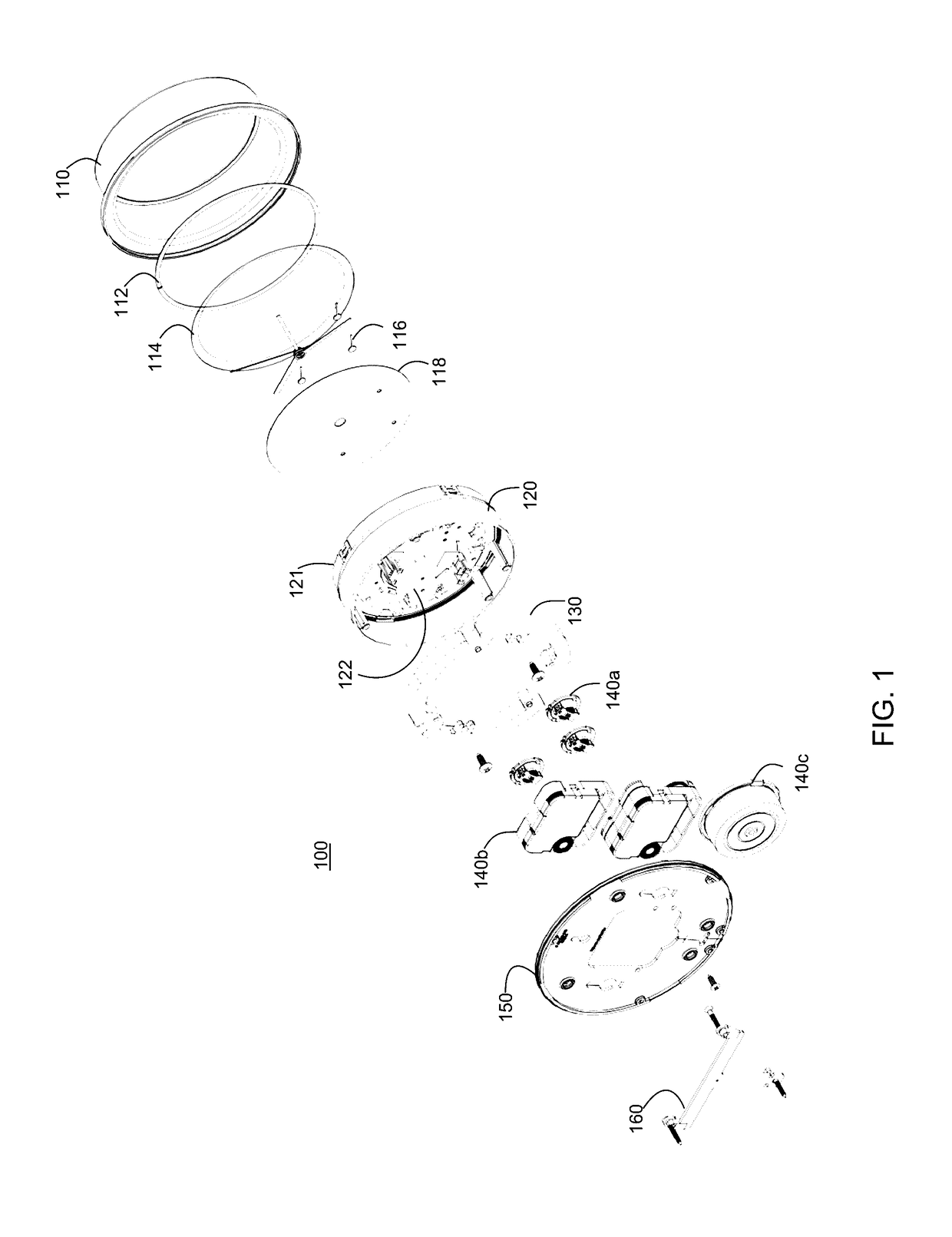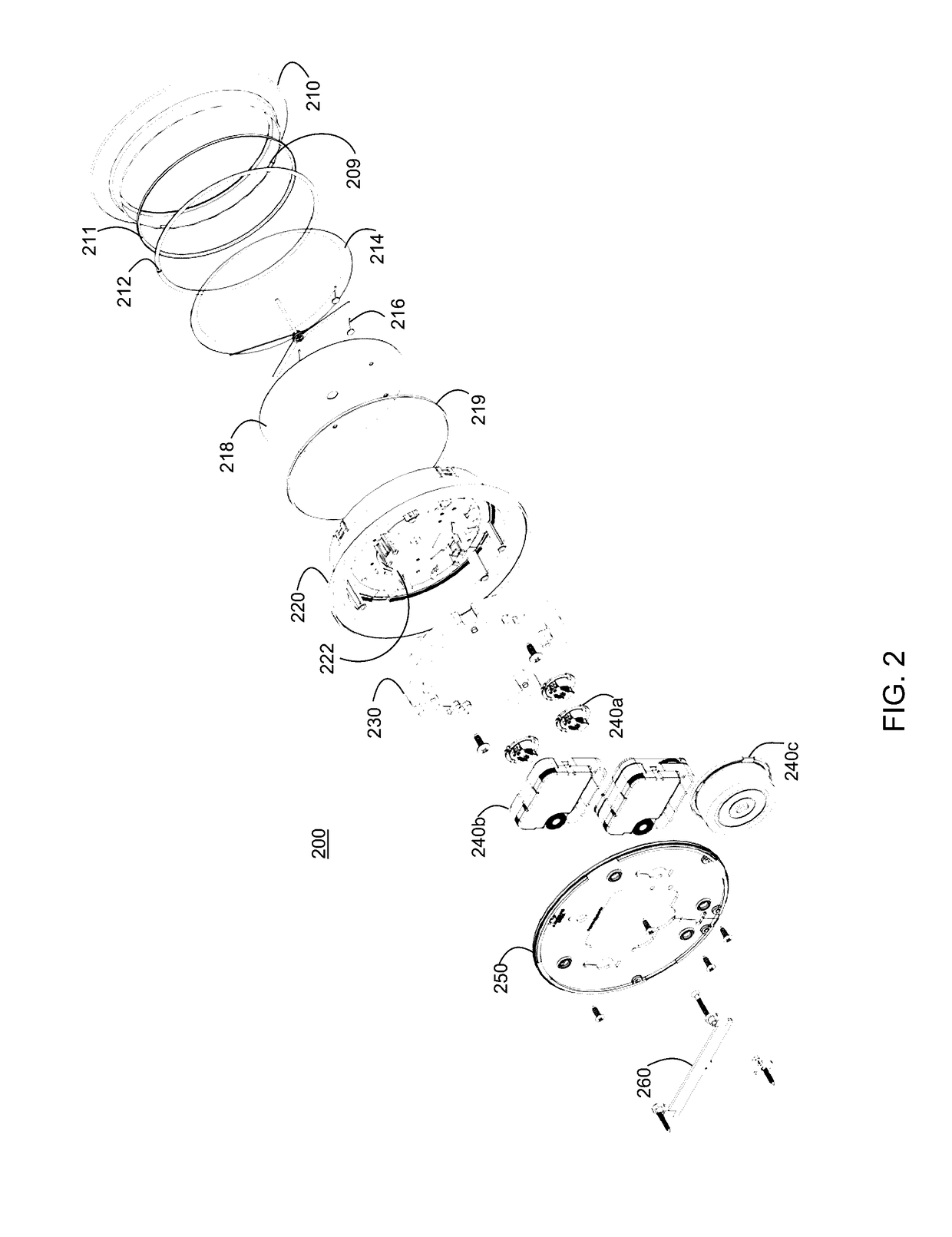Systems and Methods for Enclosing Instrument Encasing Systems
a technology of instrument encasing and system, which is applied in the direction of measuring apparatus housings, measuring apparatus for damping movement parts, etc., can solve the problems of affecting the overall weight and stability of the mounted housing, and affecting the operation of the instrument. , to achieve the effect of easy mounting and/or disassembly of instruments, and increased overall weight and stability
- Summary
- Abstract
- Description
- Claims
- Application Information
AI Technical Summary
Benefits of technology
Problems solved by technology
Method used
Image
Examples
Embodiment Construction
[0039]The elements illustrated in the Figures interoperate as explained in more detail below. Before setting forth the detailed explanation, however, it is noted that all of the discussion below, regardless of the particular implementation being described, is exemplary in nature, rather than limiting.
[0040]Referring to the drawings, and initially to FIG. 1, an exploded view exemplary instrument encasing system 100 is shown. In the illustrated embodiment, the instrument casing system 100 may include an outer housing or casing 110 that contains an inner housing 120 and gauge mount plate 122 that may include one or more calibrated dials, gauges and the like 140a-c; a front lens 114; a lens compression support thread 112; a dial 118; indicating hands 116; one or more stabilization weights 130; a back plate 150, and a suspension bracket 160. The system may include more or less components.
[0041]The outer housing 110 may provide an exterior shell that houses the other components of the enc...
PUM
 Login to View More
Login to View More Abstract
Description
Claims
Application Information
 Login to View More
Login to View More - R&D
- Intellectual Property
- Life Sciences
- Materials
- Tech Scout
- Unparalleled Data Quality
- Higher Quality Content
- 60% Fewer Hallucinations
Browse by: Latest US Patents, China's latest patents, Technical Efficacy Thesaurus, Application Domain, Technology Topic, Popular Technical Reports.
© 2025 PatSnap. All rights reserved.Legal|Privacy policy|Modern Slavery Act Transparency Statement|Sitemap|About US| Contact US: help@patsnap.com



